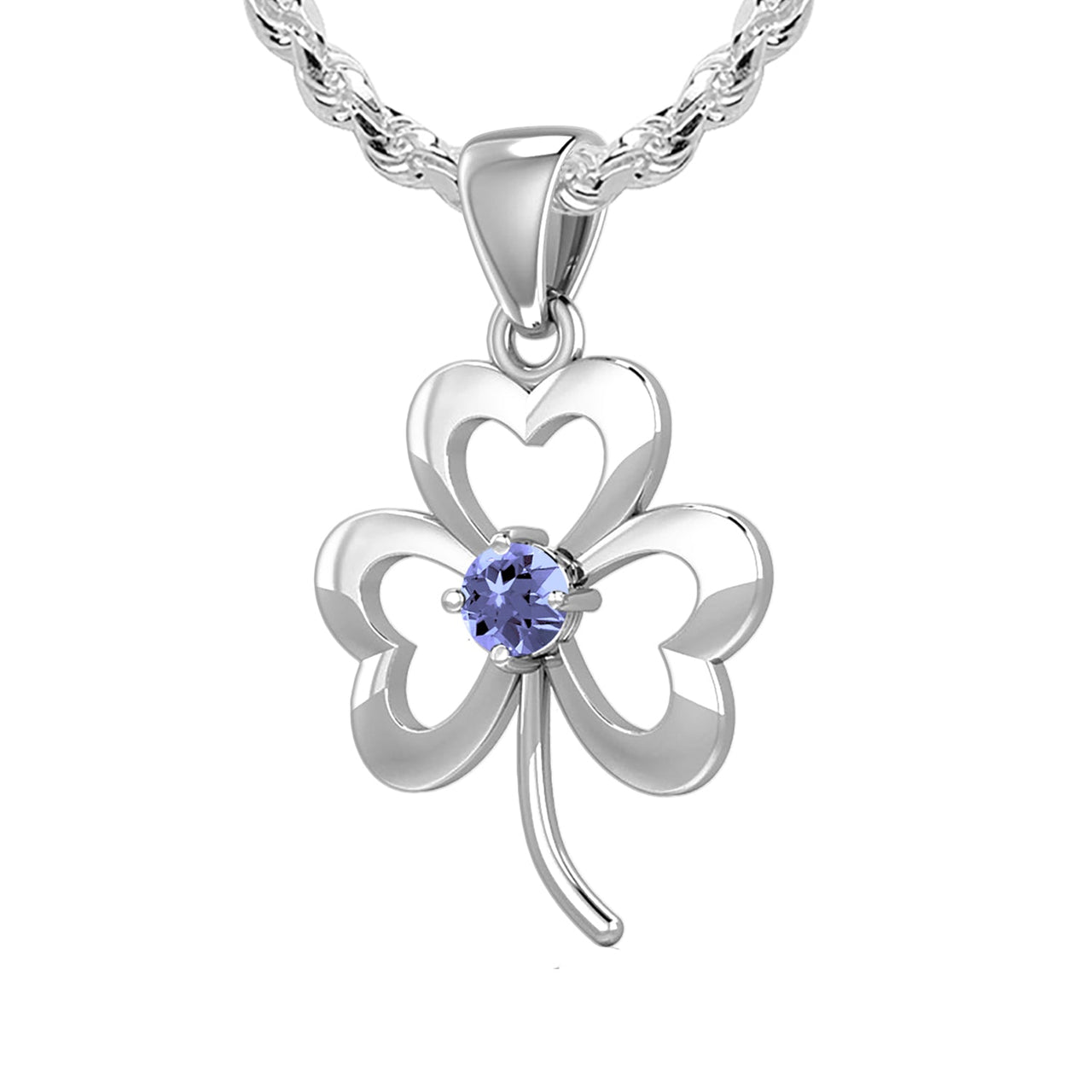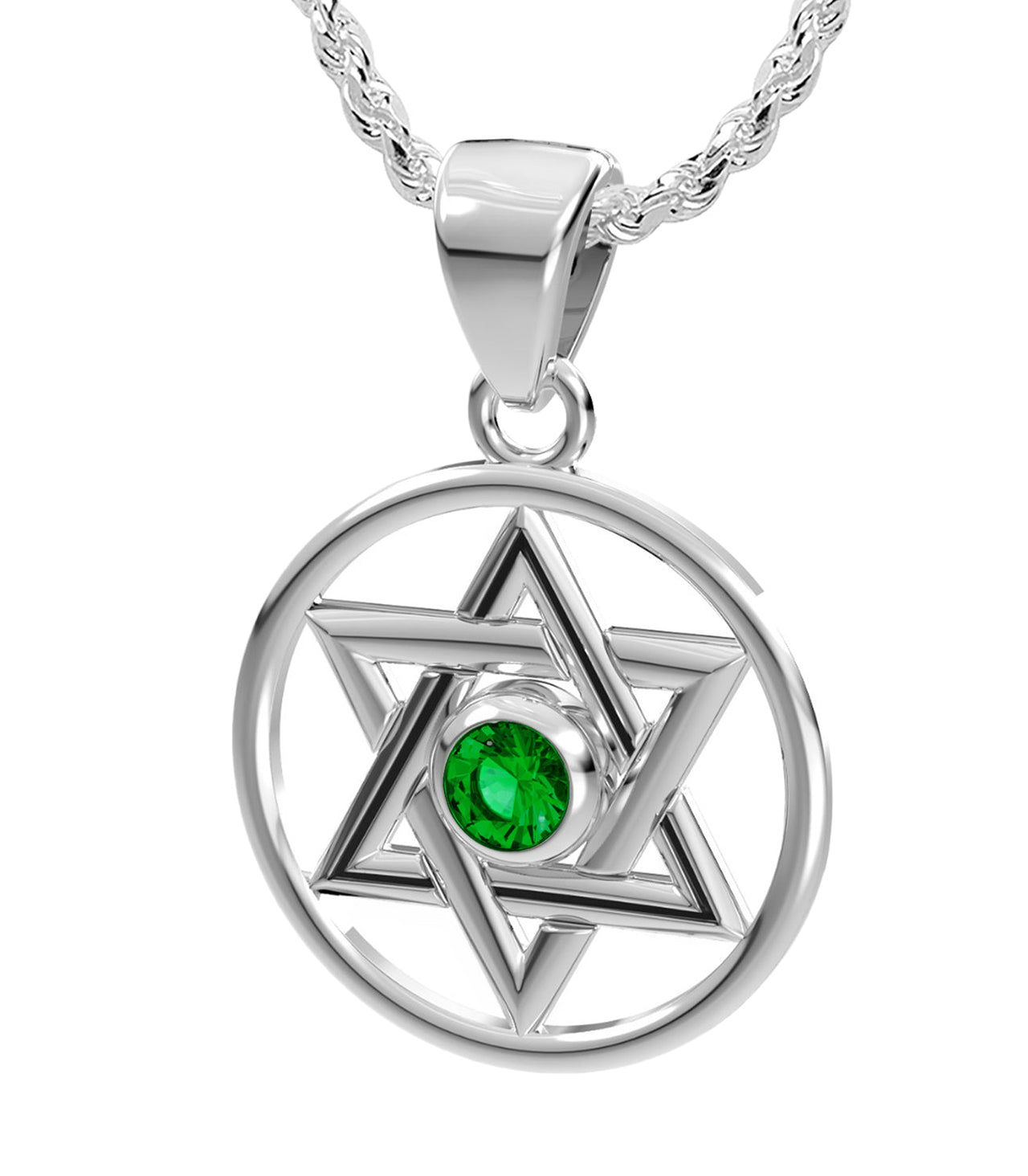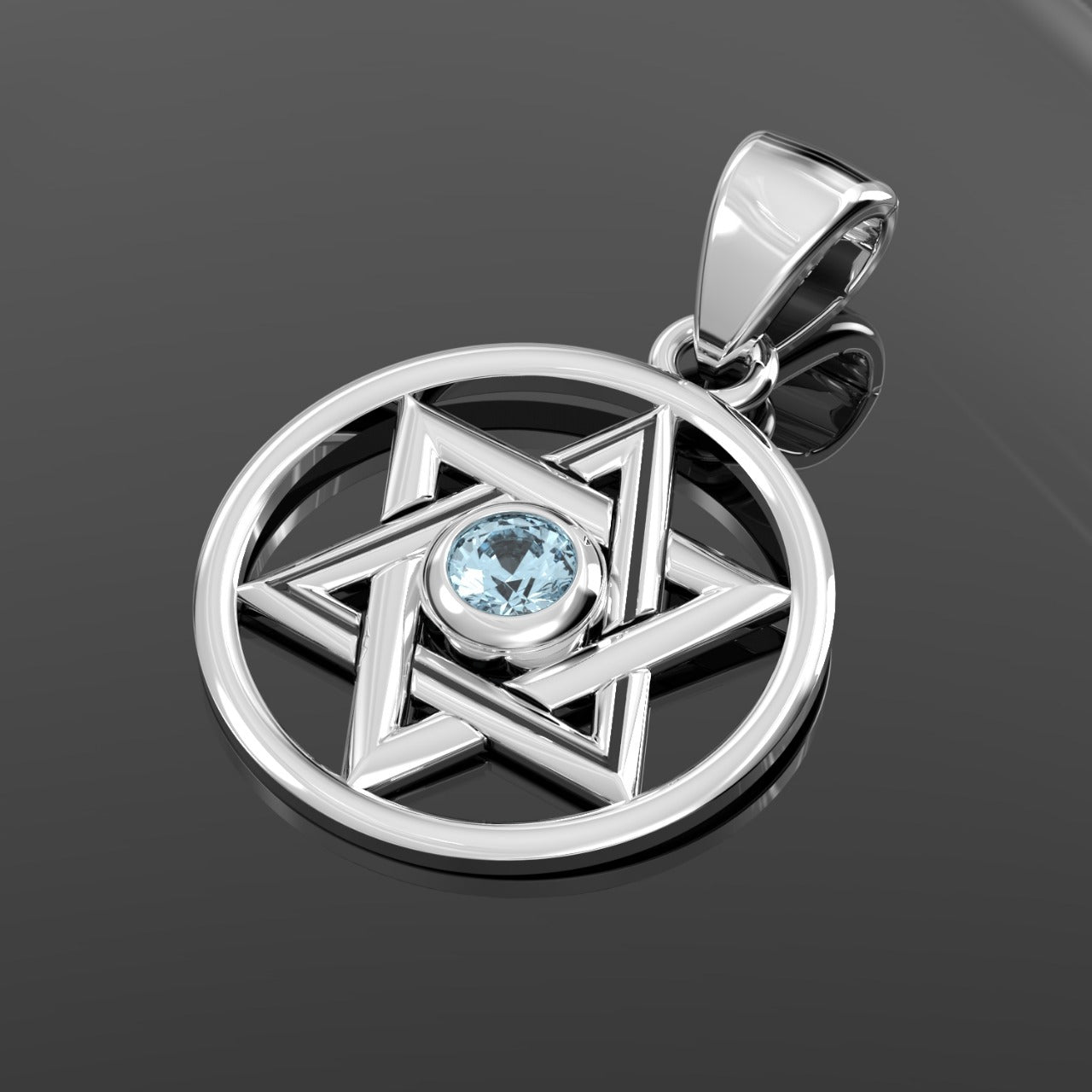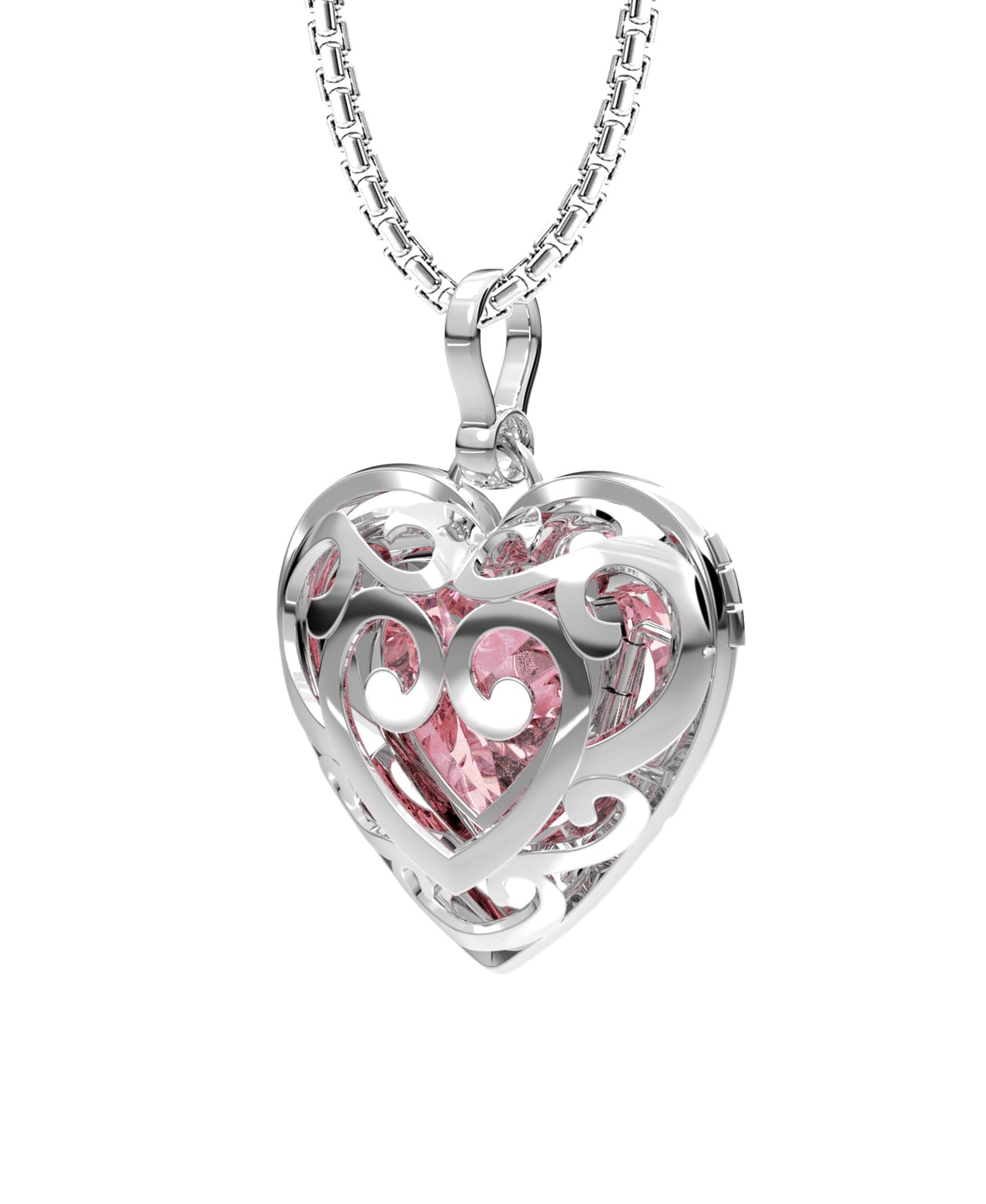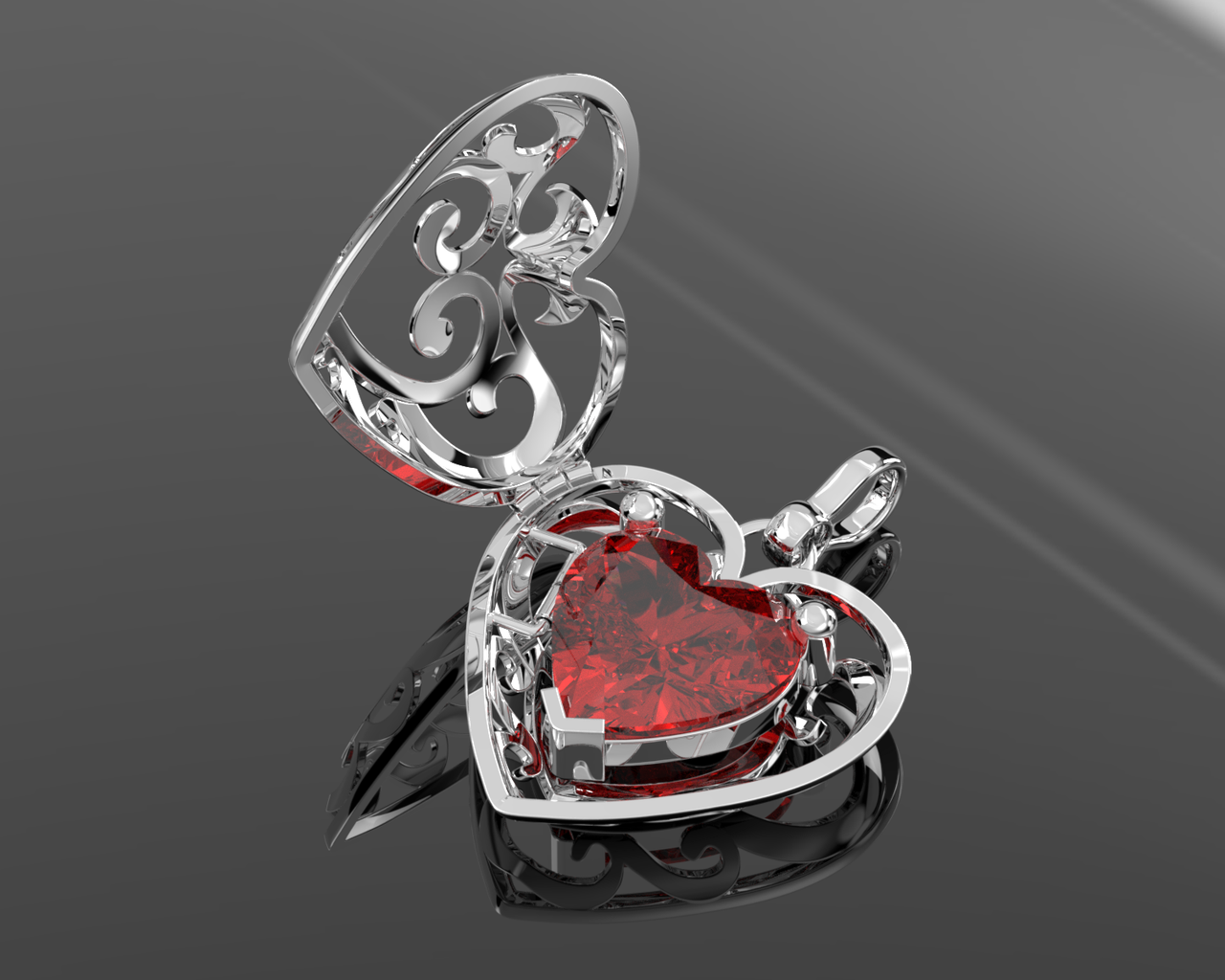Birth & Gemstone Pendants
Birthstone jewelry has been a cherished tradition for centuries, symbolizing personal significance and milestones. Each month is represented by a unique gemstone, each with its own history, meaning, and beauty. In this guide, we delve deep into the world of birthstone jewelry, exploring its origins, significance, and the unique attributes of each stone.
The History of Birthstone Jewelry
The concept of birthstones, gemstones that correspond to specific months of the year and are believed to possess special properties, has ancient roots that span various cultures and civilizations. Here's a brief overview of the journey of birthstone jewelry through the ages:
1. Biblical Times: The earliest mention of birthstones can be traced back to ancient times in the Bible, specifically the Book of Exodus. In it, the High Priest Aaron's breastplate, known as the "Breastplate of Judgment," is described as being adorned with twelve stones. Each stone represented one of the twelve tribes of Israel. Over time, scholars and gem enthusiasts began to associate these stones with the zodiac signs, and later, the months of the year.
2. Ancient Civilizations: Different ancient cultures had their own interpretations and lists of birthstones. For instance:
- The ancient Greeks believed that different gemstones had specific powers and wore them as amulets.
- In India, gemstones have been used for astrological purposes for centuries, with different stones believed to counteract the negative influences of various celestial bodies.
3. Medieval Times: During the medieval period, it was believed that each precious stone had its peak powers during its corresponding month. People began to wear the stone of the current month, switching as the calendar progressed. It was thought that wearing the stone jewelry at its peak would grant the wearer its full benefits.
4. Modern Birthstones: The modern list of official birthstones, as we know it today, was standardized in 1912 by the American National Retail Jewelers Association (now known as Jewelers of America). This list has been widely adopted and is the most recognized in the retail jewelry market today.
5. Symbolism and Beliefs: Each traditional birthstone is believed to possess certain qualities:
- For instance, January's garnet is considered a symbol of friendship and trust.
- April's diamond, often associated with love, is believed to bring courage.
- Emeralds of May are linked to fertility, rebirth, and love.
Over time, birthstone jewelry has become a popular gift, especially for milestones like birthdays, graduations, and anniversaries. The personal touch of gifting someone a piece of jewelry that aligns with their birth month adds a special significance to the gesture.
6. Contemporary Usage: In Modern times, a piece of birthstone jewelry ranges from affordable to high-end luxury items. They are available in various forms, including rings, pendants, earrings, and bracelets. Many people believe in the therapeutic healing powers and protective properties of their birthstones and wear them as talismans to channel their mystical powers. Others simply appreciate them for their beautiful color and the personal connection to their birth month. They many a thoughtful jewelry gift.
The Significance of Birthstones
Beyond their aesthetic appeal and rich colors, birthstones carry wide variety of special powers and profound meanings. They are believed to bring good fortune, health, and protection to their wearers against negative energy. Each beautiful gemstone has its own set of properties and benefits, making them deeply personal and cherished gifts.
A Month-by-Month Guide to Birthstones
January: Garnet
Garnet, the captivating birthstone of January, embodies the timeless bond of eternal friendship and unwavering trust. This deep red stone is believed to keep the wearer safe during travels. Its rich hue is reminiscent of the heart's passions and the depth of human bonds. Ancient travelers would often carry Garnet as a protective talisman, believing it would light up the night and shield them from harm.
February: Amethyst
Amethyst, a serene violet quartz, is more than just a beautiful stone. It embodies qualities of peace, bravery, and stability. For those born in February, this gem serves as a reminder of the inner strength and clarity one possesses. It's also a testament to the enduring bonds and relationships they cherish.
March: Aquamarine
The tranquil blue of Aquamarine is reminiscent of serene ocean waters. For March-born individuals, this gem symbolizes the rejuvenating power of youth, the optimism of hope, and the vitality of health. Its calming aura is believed to bring peace to tumultuous seas and clarity to clouded minds.
April: White Diamond
Diamonds, the unmatched brilliance speaks of enduring love and unbreakable strength. As the birthstone for April, it serves as a beacon of courage, reminding its wearers of their inherent resilience. While natural diamonds have their unique allure, synthetic diamonds offer an affordable and equally dazzling alternative.
May: Green Emerald
Emeralds, with their lush green hue, are like the vibrant heart of spring. They stand for renewal, love, and prosperity. Those born in May are believed to possess an innate foresight, and with the emerald's guidance, they tread a path filled with fortune.
June: Alexandrite, Moonstone, Pearl
-
Pearl: Formed within the shells of oysters, pearls symbolize purity and innocence. They are believed to offer protection and attract wealth.
-
Alexandrite: A remarkable gemstone known for its ability to change colors under different lighting conditions, Alexandrite is often described as "emerald by day, ruby by night." This unique color-changing property has made it a highly sought-after gem. Symbolically, Alexandrite is believed to bring luck, good fortune, and love. Its transformative colors are also thought to strengthen intuition and inspire creativity.
-
Moonstone: Named for its moon-like sheen, Moonstone is a mesmerizing gemstone that exhibits a play-of-color known as adularescence. This phenomenon gives the stone a glowing color, ethereal appearance. Moonstone is associated with new beginnings, inner growth, and strength. It's believed to calm emotions, enhance intuition, and bring good fortune. Traditionally, Moonstone jewelry is also linked to love and passion, making it a popular choice for romantic gifts.
July: Red Ruby
The fiery essence of Ruby is a testament to its representation of love and passion. For those born in July, this gem serves as a reminder of the burning passion within and the success that awaits in love and endeavors. The Ruby is a precious gemstone and is among hardest, 2nd only to diamond.
August: Peridot, Sardonyx, and Spinel
-
Peridot: A vibrant lime green color stone, Peridot symbolizes strength. It's believed to ward off evil and nightmares.
-
Sardonyx: Sardonyx combines layers of sard and onyx to create a reddish zebra-striped stone with white bands. It symbolizes courage, happiness, and clear communication.
-
Spinel: Spinel can be found in a range of colors, but its red variety is the most famous. It symbolizes power, hope, and revitalization.
September: Blue Sapphire
The deep blue of Sapphire is as profound as the wisdom and purity it represents. For September-born souls, this gem is a protective shield against harm and a reminder of the noble virtues they embody.
October: Opal and Pink Tourmaline
-
Opal: Known for its play-of-color, Opal symbolizes hope, innocence, and purity. It's believed to enhance the wearer's intuition and creativity.
-
Tourmaline: Available in a rainbow of colors, Tourmaline symbolizes joy, energy, and love. It's believed to repel negativity and attract inspiration.
November: Blue Topaz
Topaz, available in a range of colors, symbolizes love and affection. It's believed to provide strength and intelligence to the wearer.
December: Turquoise, Tanzanite, and Blue Zircon
-
Turquoise: With its distinct sky-blue hue, Turquoise has been treasured for millennia. It represents friendship, luck, and protection. Many cultures believe that Turquoise has healing properties and can bring peace to the wearer.
-
Tanzanite: A relatively recent discovery, Tanzanite is prized for its vibrant blue-violet color. Found only in Tanzania, this gem symbolizes transformation and awakening. It's also believed to enhance communication and intuition.
-
Zircon: Available in a variety of colors, but most popularly known in its blue form, Zircon represents wisdom, prosperity, and honor. It's believed to have the power to repel negativity and attract happiness.
Caring for Your Birthstone Jewelry
Birthstone jewelry is not just a piece of adornment; it's a personal and meaningful possession that often holds sentimental value. To ensure that your precious jewelry remains in pristine condition for years to come, follow these guidelines:
-
Storage:
- Separation is Key: Always store each piece of birthstone jewelry separately. This prevents the stones from rubbing against each other, which can lead to scratches or damage.
- Soft Pouches or Boxes: Use soft-lined jewelry boxes or pouches. This provides an added layer of protection against external elements.
- Avoid Direct Sunlight: Prolonged exposure to sunlight can fade the color of some gemstones. Store them in a cool, dark place.
-
Cleaning:
- Gentle Cleaning: Use a soft, lint-free cloth and mild soap to clean your jewelry. This will help in removing any dirt or oils that may have settled on the stone.
- Avoid Harsh Chemicals: Chemicals can be detrimental to both the stone and the metal setting. Always ensure you're using a gentle cleaner.
- Professional Cleaning: For a thorough cleaning, consider taking your jewelry to a professional once in a while.
-
Handling:
- Touch the Metal, Not the Stone: Always hold your jewelry by its metal setting. This reduces the risk of transferring oils, dirt, or lotions from your fingers to the gemstone.
- Wear with Care: While it's tempting to wear your birthstone jewelry daily, remember that some stones are delicate and can get damaged with rough handling.
- Choosing the Perfect Birthstone Jewelry
Selecting a piece of birthstone jewelry is not just about the aesthetics; it's about the connection, the meaning, and the personal touch. Here are some tips to guide your selection:
-
Quality:
- Vibrancy and Clarity: A high-quality gemstone will have a vibrant color and clear appearance. Look for stones that are free from visible inclusions or blemishes.
- Authenticity: Ensure that the stone is either genuine and lab grown synthetic not imitation. Ask for certifications if necessary.
-
Setting:
- Complementing the Stone: The setting should enhance the beauty of the stone, not overshadow it. Whether it's a prong, bezel, or channel setting, it should complement the gem's shape and size.
- Security: Ensure that the setting holds the stone securely. The last thing you want is for your precious gem to fall out.
-
- Unique Designs: Consider opting for custom designs that resonate with your personal style or hold a special meaning.
- Engravings: Adding a personal message or date can make the jewelry even more special.
- Mix and Match: Don't be afraid to mix birthstones, especially if the jewelry represents multiple loved ones or significant dates.
Natural Gemstone VS Lab Grown Synthetic:
The choice between synthetic gemstones and natural mined ones is not just about aesthetics or cost; it also has significant environmental and ethical implications. Here are the benefits of opting for synthetic gemstones over natural mined ones:
1. Environmental Preservation
-
Reduced Land Degradation: Mining can lead to significant land degradation. Large tracts of land are often disturbed to extract a small number of gemstones. Synthetic gemstone production, on the other hand, takes place in controlled environments, reducing the impact on natural landscapes.
-
Lower Water Consumption: Gemstone mining can consume vast amounts of water, affecting local water tables and potentially leading to drought conditions in surrounding areas. Synthetic gemstone production typically uses less water.
-
Fewer Greenhouse Gas Emissions: The machinery used in mining often releases significant amounts of greenhouse gases. In contrast, the controlled environment of synthetic gemstone production generally has a smaller carbon footprint.
2. Ethical Considerations
-
Avoidance of Conflict Zones: Some gemstones, especially diamonds, have histories tied to conflict zones where their sale has funded armed conflict. Buying synthetic ensures you're not inadvertently supporting such conflicts.
-
Fair Labor Practices: The gemstone mining industry has faced criticism for poor labor conditions, including child labor and unsafe working conditions. Synthetic gemstone manufacturers, especially those in developed countries, often adhere to stricter labor standards.
3. Economic Benefits
-
Cost-Effective: Synthetic gemstones are generally more affordable than their natural counterparts. This price difference doesn't necessarily reflect quality, as synthetic gemstones can be virtually identical to natural ones if not superior in terms of appearance and physical properties.
-
Predictable Supply: The production of synthetic gemstones is not dependent on finding new deposits or the unpredictability of mining operations. This ensures a more stable and predictable supply chain.
4. Purity and Quality
-
Fewer Impurities: Synthetic gemstones are grown in controlled environments, which often results in stones with fewer inclusions or impurities than many natural gemstones. This is a very important fact because almost in every case, a synthetic gemstone is superior to a natural one, in clarity, color and brilliance.
-
Customization: Some synthetic gemstone production methods allow for customization, letting consumers choose specific colors or qualities they desire.
5. Innovation and Technology
- Supporting Advancement: Opting for synthetic gemstones supports industries that are at the forefront of technological innovation. As these technologies improve, we can expect even more sustainable and efficient methods of production.
In conclusion, while natural gemstones have their unique allure and historical significance, synthetic gemstones offer a more sustainable and ethical alternative. As consumers become more conscious of the environmental and ethical implications of their purchases, synthetic gemstones are likely to play an increasingly important role in the jewelry industry.
Remember, the perfect piece of birthstone jewelry is one that not only looks beautiful but also holds a special place in your heart.
In conclusion, personalized birthstone jewelry is not just a piece of adornment but a symbol of one's identity, history, and values. Whether you're gifting it or wearing it, the beauty and significance of these gemstones make them timeless treasures. Whether you're purchasing it in yellow gold or bright sterling silver, birthstone jewelry makes an excellent gift for any occasion and can be worn daily. It provides an endless list of color combinations to match any outfit and provides protection with their magical powers. For a deeper dive into gemstones, trying visiting americangemsociety.org or gemsociety.org.
American Gem Society. Birthstones by month. Retrieved from https://www.americangemsociety.org/page/birthstonesbymonth
Gemological Institute of America. Birthstones by month: What is your birthstone? Retrieved from https://www.gia.edu/birthstones
Hall, J. (2007). Gems of wisdom, gems of power: A practical guide to how gemstones, minerals, and crystals can enhance your life. Fair Winds Press.
Kunz, G. F. (1913). The curious lore of precious stones. J.B. Lippincott Company.
International Gemstone Society : The Pros and Cons of Synthetic Gems. Retrieved from https://www.theigs.org/synthetic-gemstone-guide/

